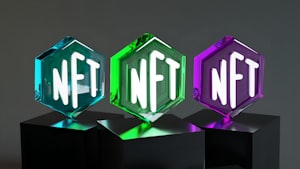Peersyst Unveils EVM-Compatible Sidechain for XRPL Ledger
In a three-phase deployment, Solidity-based smart contracts will make their way to the XRP ledger through the newly launched EVM-Compatible sidechain

In collaboration with RippleX developers, Blockchain software company Peersyst announced Monday the launch of the first phase of the Ethereum Virtual Machine (EVM) compatible sidechain: a blockchain that runs in parallel with the main XRP Ledger (XRPL) devnet or developer network—where developers test and troubleshoot new technologies before they live on the mainnet.
📢Thrilled to announce the launch of the first #XRPL #Sidechain compatible with #EVM!🔗
— Peersyst Technology (@Peersyst) October 17, 2022
This #Devnet version with its #Explorer and #Bridge is the first step to open a world of gigantic possibilities to all developers and businesses that put their trust in @Ripple @RippleXDev 🔐 pic.twitter.com/9BumdUbBp7
According to RippleX, the project is aimed at easing the burden of crypto developers, who are accustomed to using Solidity for programming smart contracts and a thriving suite of DApps (decentralized applications) on the Ethereum network. By creating an EVM sidechain, developers would benefit from XRPL's speed, cheap transactions and sustainability, without the dismal reminisce of choosing between XRPL or EVM-compatible chains.
Contrary to building an EVM sidechain, why not make XRPL's mainnet EVM-compatible? Ripple Software Engineer Mayukha Vadari explained in a blog post Monday, that such a move would be detrimental and "could undermine XPRL's efficiency, scalability and security.”
We can now unlock the full potential of decentralized finance (DeFi) in XRPL. A new world of possibilities is unlocked for XRP thanks to the sidechain with EVM. The EVM sidechain uses XRP as its native token. You don’t need any other currency to access it. Built with the powerful Tendermint protocol, and carefully customized for the XRP Ledger, it allows to achieve around 1,000 transactions per second using the Ethereum Virtual Machine, said Peersyst
Vadari explained further, that there are three phases to the EVM sidechain deployment and the endgame is to have "a permissionless EVM sidechain and bridge available on the XRPL Mainnet"



